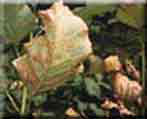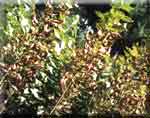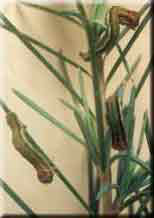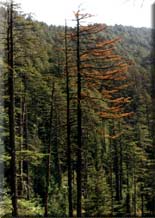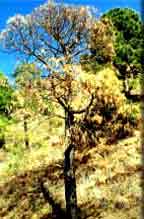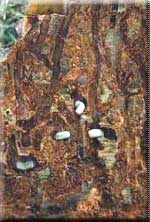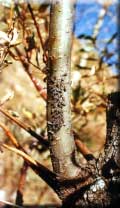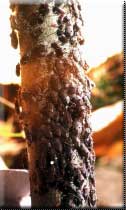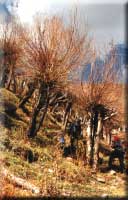 Conifers
Conifers
 Standardisation of Nursery Techniques
Standardisation of Nursery Techniques
 Establishment of Seed Production Areas/Seed Orchards
Establishment of Seed Production Areas/Seed Orchards
 Afforestation of Cold Deserts
Afforestation of Cold Deserts
 Rehabilitation of Mined Areas
Rehabilitation of Mined Areas
 Ecological & Phyto-sociological Studies
Ecological & Phyto-sociological Studies
 Insect Pest and Disease Management
Insect Pest and Disease Management
 Agroforestry & Extension Activities
Agroforestry & Extension Activities
 Herbarium
Herbarium
 Western Himalayan Temperate Arboretum
Western Himalayan Temperate Arboretum
 Publications
Publications
 Medicinal Plants & NWFP
Medicinal Plants & NWFP
INSECT PESTS DISEASE MANAGEMENT
|
|
||||||||||||||||||
Keeping in view the importance of species and real threat from bark and wood borers, 7 provenances of Chir-pine were screened in field and evaluated for the attack of insect stem borers viz. Polygraphus longifolia, Ips longifolia, Cryptorhynchus rufescens and Sphaenoptera aterrima. Giri Gambhar Provenances (58%) and Kangra Valley (53.2%) were found to be most susceptible while Seer Kunar Khud (8.1%) and Beas Valley (7.0 %) was found to be most.
Control of Insect–Disease Syndrome in Dalbergia sissoo: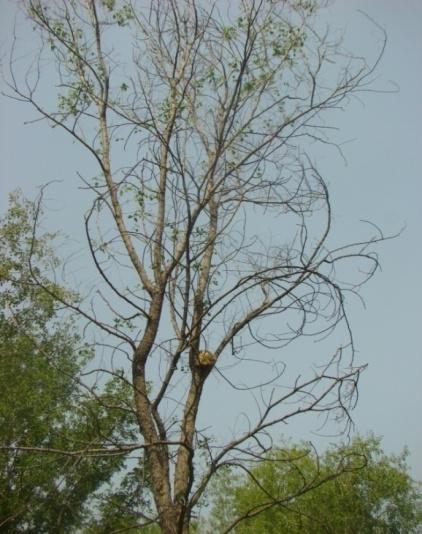 |
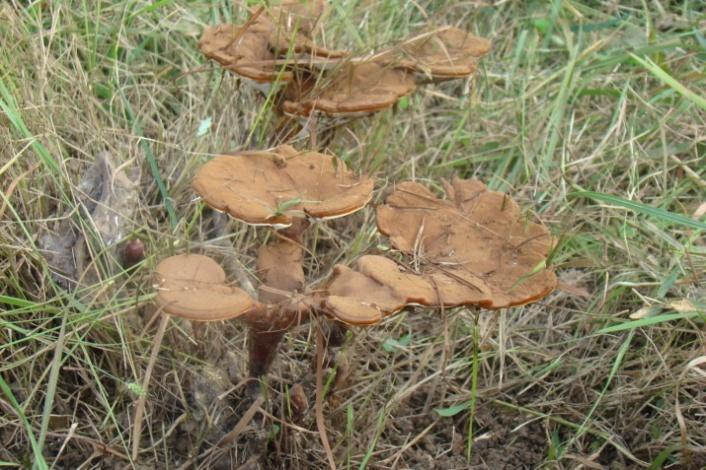 |
Forty provenances of Shisham (Dalbergia sissoo) were screened against Ganoderma root-rot and termite under natural conditions in a randomized block design. syndrome free. Provenance Rampur, which was rated as resistant with 2.0 per cent tree mortality, was fifth best in terms of plant height and diameter at breast height).
Management of Deodar defoliator, Ectropis deodarae Prout. (Lepidoptera: Geometridae)Developed IPM Model on Deodar defoliator, which is one of the destructive defoliator of deodar Forest. In spite of the complicated defoliation problem, high mountains and sporadic out-break of this pest , it is possible to manage the pest by adopting silvicultural, mechanical and biological control during out- break situation.
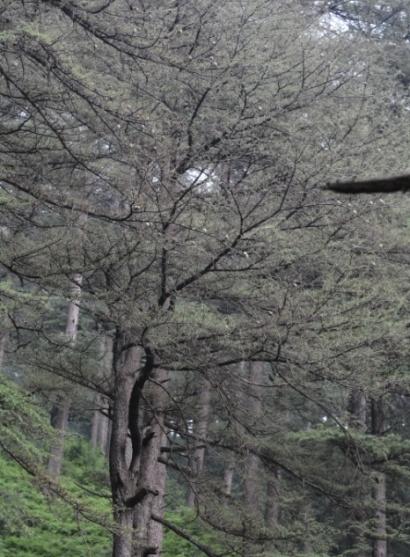 |
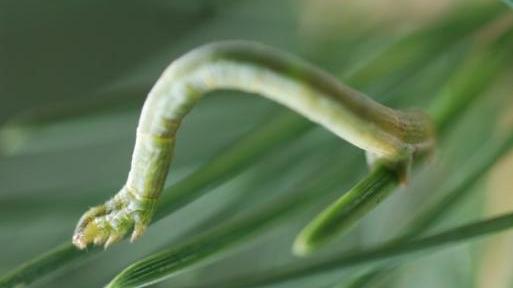 |
Ipsdienol ((s)-2-methyl-6mehtyleneocta-2,7-dien-4-0l @ of 8 mg in Fero-T™ (Pheromone Trap) was found effective in containing population of I. longifolia Steb. (Coeoptera: Scolytidae) in Chir-pine planation. 12-20 Pheromone traps are required in one ha. Plantation.
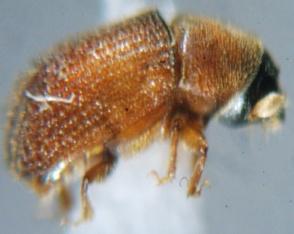 |
 |
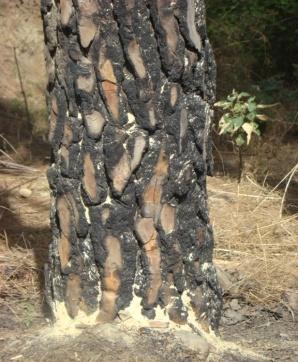 |
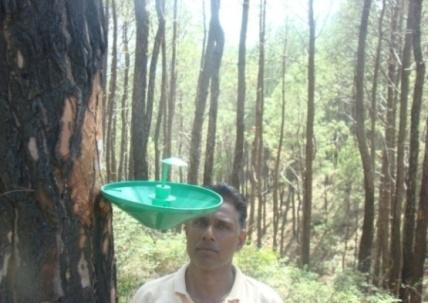 |
| Beetle Attack | Pheromone Trap |
Tree-trap with 95 – 110 cm L X90 - 100 cm GBH and 25 to 35 % moisture content is found to be effective to attract the beetles.
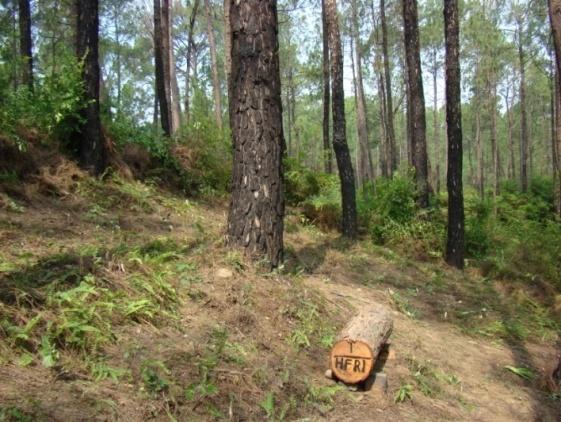 |
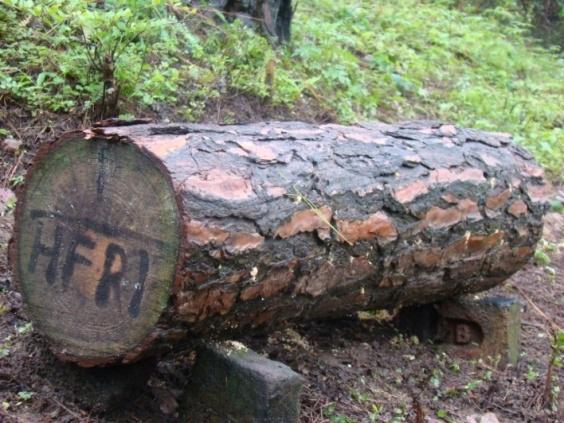 |
| Tree Trap used to contain the Beetle population in Hamirpur Forest Division | |
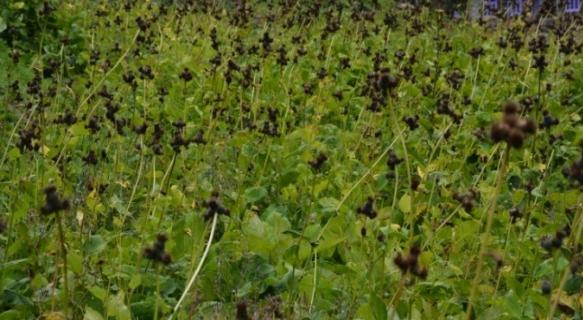 |
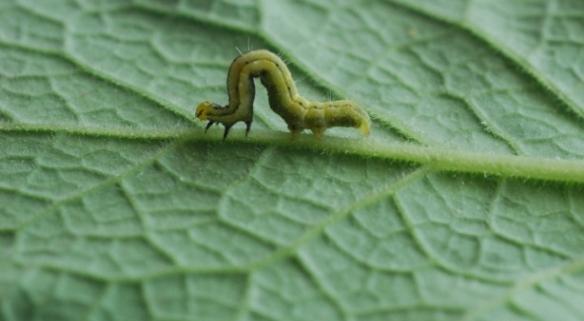 |
Neem cake @ 500 gm / m2, Grownim @ 5.0 % and summer oil @ 5.0 % is proved to be effective to keep the population of T. orichalcea below Economic Threshold Level in Saussurea costus.

